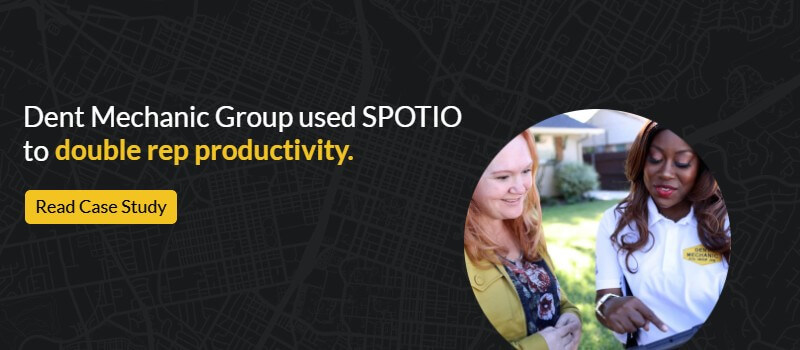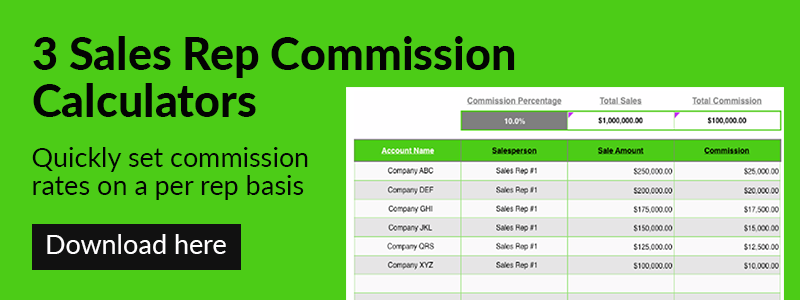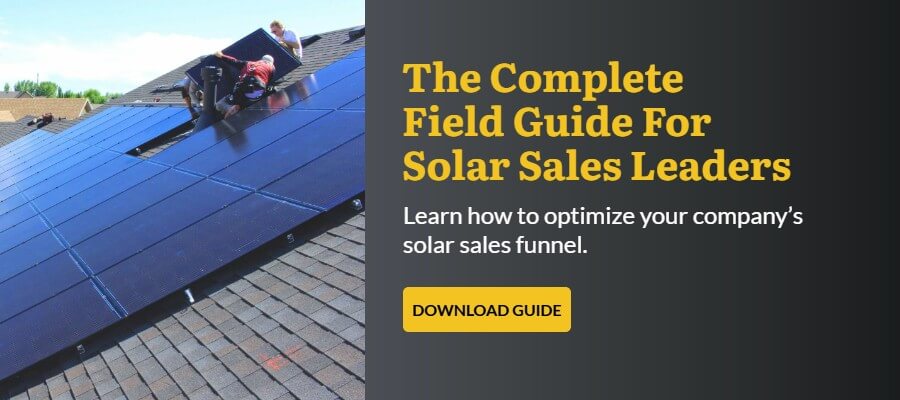Why Door-to-Door Sales Still Matter in 2025.
In an era dominated by digital prospecting and remote communication, door-to-door (D2D) sales provides a personal, face-to-face approach that builds trust, tailors the buying experience, and taps into key markets. While some may consider outside sales old-fashioned, industries like home security, solar energy, and home improvement continue to rely on this method for deeper customer engagement and higher-quality conversions.
For field sales managers, succeeding in D2D sales means understanding the right strategies, creating scalable processes, and guiding teams toward consistent performance.
This guide offers actionable insights and door-to-door sales success tips that help both sales reps and their managers strengthen their field sales operations.
Contents
- What is Door to Door Sales?
- Pillars of the D2D Sales Process
- For Door to Door Sales Managers:
- For Door to Door Sales Reps:
- Ready. Set. Sell.
What is Door to Door Sales?
Door to door sales is the process of canvassing a territory and speaking face to face with potential customers about the benefits of a product or service.
In a B2B context, door to door sales involves visiting a business to speak with a decision maker, book an appointment, or provide promotional material, such as sales sheets or a business card.
B2C salespeople may target prospects in a specific neighborhood, knocking on doors to speak with residents. Reps may also use social proof in their process — for example, telling a prospect whether someone else in their neighborhood has purchased the product the rep is selling.
Pillars Of The D2D Sales Process
Wondering how to be a good door to door salesperson? Effective door to door sales processes are based on the following pillars:
Prospecting is the search for new customers. Prospects are essential to your sales funnel, because you need a steady stream of new customers in order to grow.
Qualifying means identifying a prospect’s need that matches one of the features or benefits you offer. Qualifying is based on prospects’ “pain” (enough pain to buy), budget (the money to buy), and decision power (authority to buy). It requires a door to door salesperson to ask a lot of open-ended questions, listen carefully, and respond appropriately.
Pitching: is when you make an offer and describe the benefits to your qualified prospect. You provide a solution for their pain points and explain how your product makes their lives or jobs easier.
Closing is when you convince the potential customer to buy your product or service. There are numerous ways to close a deal, and finding the one that works best for you and each qualified prospect is a vital skill for successful door to door sales.
Follow-up means that after the sale, the door to door salesperson contacts the customer to ensure they received what they ordered and are satisfied with their purchase. It’s essential to establishing a relationship with your new customer, and the gateway to future opportunities with the customer, should their needs change.
How to Manage Door to Door Sales Teams
A door-to-door sales manager is more than just a supervisor. They are a strategic leader who:
- Sets the vision: Aligning door-to-door sales activities with broader organizational objectives.
- Allocates resources: Determining territories, assigning quotas, and ensuring the team has the necessary tools and materials.
- Coaches and mentors: Training, guiding, and motivating sales representatives to improve their approach, product knowledge, and closing skills.
- Monitors performance: Using data and analytics to measure results, identify trends, and implement continuous improvements.
In short, the sales manager’s job is to ensure that door-to-door sales efforts are not just well-executed, but strategically optimized for sustained growth.
Here’s an overview of what you should know to lead a high-performing door-to-door sales team.
How to Build the Foundation for a High-Performing Door-to-Door Sales Operation
To achieve success, field sales managers must first build a strong foundation:
- Clear Objectives: Define what “success” looks like. Whether it’s increased market penetration in a key territory or higher close rates among a certain customer segment, having clear targets directs all other activities.
- Defined Territories: Allocate territories thoughtfully. Consider demographics, proximity to one another, and competitive landscape. Proper territory management ensures balanced workloads and maximizes coverage.
- Consistent Messaging: Ensure your team articulates the company’s value proposition consistently. Provide sales scripts, objection-handling frameworks, and product education so reps deliver a coherent, compelling pitch at every door.
How to Hire, Onboard, and Train a Door-to-Door Sales Team
Hiring: Look for traits essential in door-to-door sales: communication skills, persistence, adaptability, and a positive attitude. During interviews, present scenario-based questions or role-play exercises to gauge how candidates handle real-world selling situations.
Onboarding: Set new hires up for success with a structured onboarding process. Provide product materials, territory maps, and access to sales enablement tools. Offer shadowing opportunities to help them understand customer pain points and effective messaging.
Training: Emphasize practical skill development, such as how to introduce the product quickly, ask open-ended questions, and respond gracefully to objections. Regular training sessions keep the team sharp and reduce ramp-up time for new reps.
How to Manage Territory and Set Targets
Territory management is the backbone of door-to-door sales strategy. Field sales managers should:
- Use Market Data: Identify territories with the highest potential customers. Consider factors like neighborhood demographics, income levels, and existing market share.
- Balance Workloads: Distribute territories fairly so that each rep has similar opportunity and workload. This fosters morale and reduces burnout.
- Set Clear Targets: Assign achievable yet challenging targets for each rep and territory. Transparent goals help maintain motivation and offer a roadmap for success.
How to Leverage Technology and Data-Driven Insights
Modern field sales managers rely on technology to optimize every aspect of door-to-door sales:
CRM and Territory Management Software: Track customer interactions, manage appointments, and visualize territories. This saves time and provides clarity on coverage and performance.
Sales Enablement Tools: Provide on-the-spot access to product information, pricing sheets, and case studies. Being able to quickly reference key materials helps reps engage prospects more effectively.
Automation Tools: Automating routine tasks can increase rep productivity by as much as 46%. And higher productivity correlates with more sales. Use a tool that automates tasks such as CRM data entry, sending emails, updating contact info, logging activities, and planning a day in the field.
Data Analysis: Assess close rates, outreach volumes, and field notes to inform ongoing strategy. Data-driven insights help field sales managers identify what works, pinpoint areas for improvement, and replicate success across different territories.
How to Track Performance and Drive Continuous Improvement
To maintain a high-performing door-to-door sales operation, consistently monitor progress:
- Regular Check-ins: Schedule one-on-one meetings with team members to review KPIs, address challenges, and recognize achievements.
- Feedback Loops: Encourage reps to share what they’re seeing in the field. This bottom-up feedback can reveal emerging customer pain points, competitor activities, or messaging that resonates best.
- Benchmarking and Adjusting: Compare current performance against past results and industry benchmarks. Use these insights to refine territory assignments, update training methods, and improve pitch strategies.
- Leverage Leaderboards: Implement real-time sales leaderboards to foster healthy competition, highlight top performers, and incentivize continuous growth. As shown by SPOTIO’s Leaderboards feature, transparent rankings can motivate underperforming reps to improve their results and keep your entire team focused on target metrics.
Common D2D Challenges and How to Overcome Them
Challenge: High Turnover
Solution: Invest in better hiring and ongoing support. A strong team culture, clear career paths, and recognition programs can boost retention.
Challenge: Inconsistent Messaging
Solution: Provide standardized scripts and role-play sessions. Reinforce messaging guidelines through ongoing coaching and recorded pitch reviews.
Challenge: Prospecting Fatigue
Solution: Rotate territories, introduce incentive programs, and encourage reps to share “wins” with the team to maintain enthusiasm and motivation.
How to Recruit High-Performing Door to Door Sales Reps
One of the first things you should do when hiring a D2D sales team is to decide who your ideal candidate is. What traits are you looking for, and what kind of skills do you require?
You should also decide early if you want experienced or inexperienced D2D sales professionals.
Experienced canvassers can get right to work and start delivering leads, but their sales techniques may not align with your goals. New canvassers might be slower to get results, but you have the opportunity to train them on exactly how you want them to work.
We recommend finding up to five candidates to interview before extending a job offer. You can look for candidates on LinkedIn, Indeed, and ZipRecruiter, as well as ask your professional network for any recommendations.
Determine Your Compensation Model
Here are a few of the most common compensation models for door to door sales reps:
- Commission Only: Sales reps working on a commission-only structure are usually independent contractors, not full-time employees. This payment structure is best for people that are self-motivated and eager to sell.
- Gross Margin: While it may or may not have a base salary, a gross margin commission structure pays the door to door salesperson on the amount of profit a sale generates. For example, if the deal is for $1,000, but the costs associated with the sale are $300, then the rep earns commission on $1,000 minus $300, or $700 gross margin.
- Tiered Commission: When a company uses the tiered-commission compensation model, they pay higher commission on sales that exceed a certain threshold. For example, the sales rep might earn 5% commission on all sales up to $10,000, but then earn an additional 3% on any sales over that amount for a total of 8% commission.
Interview Questions For Door To Door Salespeople
Once you have a pool of appropriate candidates, it’s time for you to screen for the best of the bunch.
Some examples of great questions include:
- What do you do for fun?
- What motivates you and why?
- What streaming shows have you enjoyed the most?
- Would you please describe for me a typical day for you on your last job?
- Can you please share an example of when you convinced someone to do something they were not interested in doing at the time?
- How do you set goals and hold yourself accountable?
- What do you want to be doing a year from now? Three? Five?
- Who was your best boss so far and what did you learn from him or her?
- What is the best lesson you ever learned in a work training session that you still use today?
- How do you deal with rejection?
- How do you celebrate success?
Top Tools for D2D Managers
The technology you use is a crucial part of success in door to door sales. Following are some of the best tools for managing the D2D sales process:
Territory Management
Territory management software allows you to determine strategic territories for your sales reps by geography, ZIP Code, and other factors. You can also define parent and child territories, set user permissions for territory views, and get detailed analytics for every territory.
Sales Leaderboards
Sales leaderboards encourage healthy competition between reps and boost engagement in contests and other incentives you use to motivate team members.
Rep Tracking
Rep tracking tools show you where reps are in real-time. Reps can drop pins on a map at each visit, so you can see the exact time of every sales call, how long reps met with a contact, and whether they completed their route for the day.
Sales Tracking
Sales tracking offers management and operations key insights into rep and territory performance, with activity metrics and KPIs.
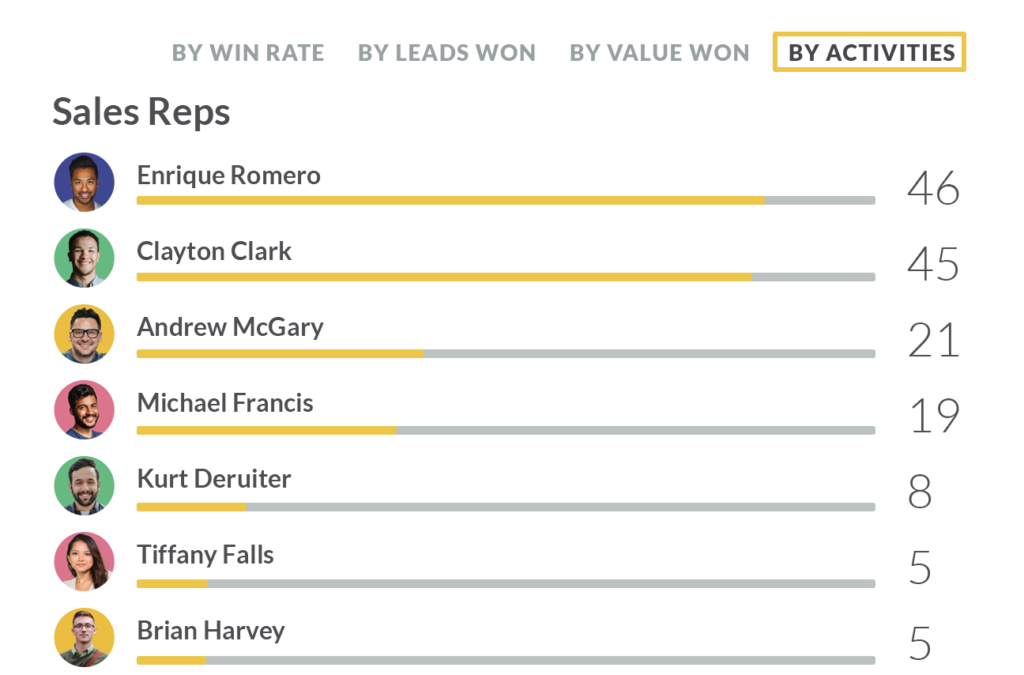
Turning Strategy into Sustainable Results
Door-to-door sales can be a powerful engine for growth—but only when approached strategically. As a field sales manager, your role is to provide the vision, resources, and coaching that enables your team to thrive. By following these door-to-door sales success tips, leveraging technology, and continuously refining your strategy based on data-driven insights, you’ll be well-positioned to create a sustainable, scalable, and high-performing door-to-door sales operation.
1. Recruit Strategically: Look for candidates with strong interpersonal skills and resilience. Door-to-door selling is not for everyone—selecting the right talent from the start reduces turnover and ensures a positive team culture.
2. Prioritize Training and Coaching: A well-prepared rep can adapt to unexpected questions or objections. Regular coaching, role-playing scenarios, and skill refreshers turn average performers into top sellers.
3. Set Measurable Goals: Define key performance indicators (KPIs) such as doors knocked, conversations held, and conversion rates. Tracking these metrics keeps your team focused and helps you identify improvement areas.
4. Encourage Accountability: Implement performance dashboards and regular check-ins. When team members understand how their actions connect to broader goals, accountability—and results—improve.
5. Promote Continuous Learning: Share best practices, host team debriefs, and encourage knowledge exchange. High-performing door-to-door sales teams are those that continually learn from each success and setback.
The key is to remain adaptable. Markets shift, customer preferences evolve, and competitive landscapes change. A successful field sales manager never stops learning, adjusting, and striving for continuous improvement—setting the stage for consistent success in door-to-door sales.
Popular Door to Door Sales Industries
Many industries employ a door to door sales force. Some of the most prominent include the following:
Solar Energy
Door to door sales of residential rooftop solar panels work well for the solar energy industry, because the product is complicated and is best explained in a one-on-one, in-home consultation.
Roofing
Roofing is expensive, and a homeowner might be more likely to purchase a new roof if a sales rep explains the benefits of it in person.
Home Improvement
Door to door sales works well for home improvement services, because D2D sales professionals can demonstrate how homeowners can upgrade or maintain their homes. Sales reps also know that they’re speaking with decision-makers, when they meet with homeowners and can typically know within minutes which leads are viable.
Alarm/Security
Alarms and security systems that protect a homeowner’s property are other products that are best explained in person.
Telecom
Canvassing efforts have worked well for sellers of telecommunications services, because they can offer persuasive reasons to switch from a current provider to a new service.
How Be Successful in D2D Sales: 11 Traits
Successful door to door sales professionals share these 11 traits:
1. Knowledge of the product inside and out. To explain the features and benefits, or even to gauge need, a door to door salesperson must have thorough knowledge of their product or service.
2. Expertise that provides value to the customer. Customers are more educated than ever, with the resources available to them online. If sales reps tell them what they already know, they’re not providing any value. HubSpot recommends that door to door sales professionals educate the prospect about what they can’t discover on their own, thereby establishing credibility and trust.
3. Rapport. The most successful door to door salespeople have excellent emotional intelligence and are skillful in the art of finding connections with other people. Some people have these skills naturally and don’t have to think about it; others have to research a prospect to find common ground.
4. Prospect qualification. The best sales reps ask open-ended questions to gather information and close-ended probes to establish needs.
5. Listening. After asking a question, the best door-to-door reps actively listen as the prospect answers.
6. Empathy. WIFM stands for “What’s In It For Me?” The most successful sales reps understand the prospect’s needs and are able to explain how their product or service will help the prospect.
7. Expectation Management. The most successful salespeople establish expectations for each call, explaining to the prospect what will happen next. InsightSquared suggests creating a buyer-seller agreement, which is a verbal agreement that outlines what will happen next in the call and makes the lead more comfortable.
8.Trust-Building. They outline the purchasing process well. Honesty is key to building trust. D2D sales reps who explain what the prospect will experience before, during, and after the sale will be successful at establishing that trust.
9. Time Management. Successful reps are strategic about prospecting. Whether that means calling on current customers and looking for referrals or reviving lost opportunities, the most successful door to door sales manage their time well and focus on the prospects most likely to convert.
10. Closing. Knowing how and when to close is a critical skill for all sales reps, especially in door to door sales. Not all customers are the same, and neither are your prospects, so make sure you understand what appeals to your target audience. When you are presenting and handling objections, you should also be thinking of how you will ask for the order. (See our blog on specific strategies for closing deals).
11. Record-Keeping. A successful door to door salesperson keeps detailed notes about potential customers, pain points, and meetings. With this information, they can continue to build rapport and move the prospect further into the sales funnel.
Top Tools for D2D Sales Reps
1. Route Planner
A route planner optimizes route efficiency, so you make the most of your time in the field. SPOTIO’s route planning feature automatically creates the best route for sales reps, tracks mileage, and syncs completed routes to your CRM.
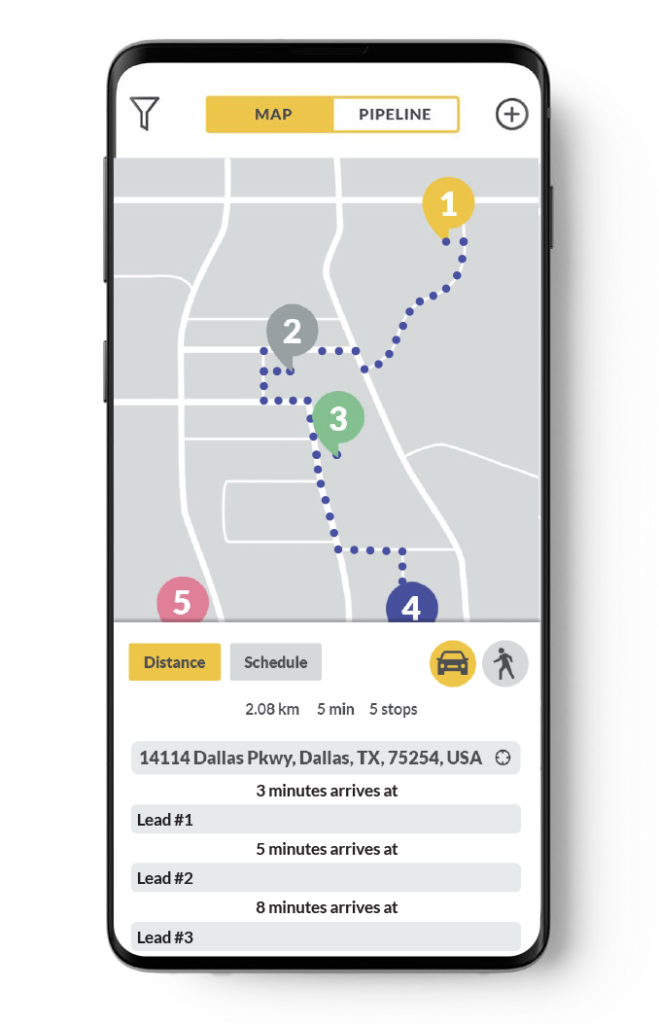
2. Lead Machine
SPOTIO Lead Machine lets sales teams import existing customers and prospects, color-code map pins based on account type, and filter leads by more than 200 data points. With the user-friendly mobile app, reps can find contact information with a single tap while in the field.
3. Appointment Setting
You need technology that makes it easy to schedule appointments — for yourself or for other members of the sales team. SPOTIO’s appointment setting feature lets you see everyone’s schedule and schedule demos or appointments from your mobile device.
4. Customer Mapping
A customer mapping solution takes complex data from your CRM and compiles it into an easy-to-view interactive map.
With a mapping tool, you can look at a map, zoom in on a territory, and tap it to see all prospect information and rep data.
5. Autoplays
Autoplays are like a roadmap for sales activities and next steps. They eliminate the need for a door to door salesperson to keep track of when they should follow up, where prospects are in the pipeline, and what activity comes next.
Whether it’s a text, email, visit, or call, Autoplays deploys the right activity at the right time, keeping prospects engaged, reps productive, and leads moving through the pipeline.
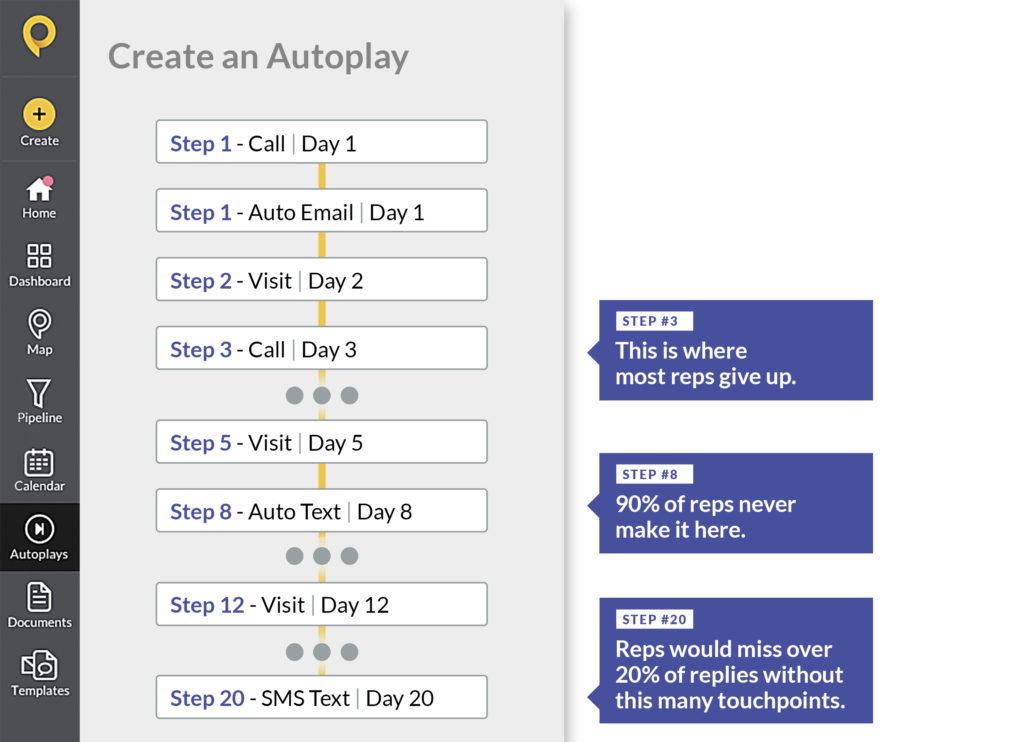
6. CRM Integration
Manual processes can be a drag on productivity. With CRM integration, any notes or data recorded while canvassing will automatically push to your CRM, ensuring sales reps are always working with the most recent information.
Top 10 Door To Door Sales Tips for to Crush Sales Quota
Below are some direct sales strategies that will help door to door salespeople succeed.
Master the Product
Why is this important?
Excellent product knowledge is paramount to your success. After all, you can’t sell what you don’t understand.
Actionable tip:
Practice explaining your product’s features and benefits to someone who knows nothing about it (a friend or family member, for example)Then ask what questions they have or if they have feedback on your presentation.
Prospect Efficiently
Why is this important?
Qualified prospects are the best prospects that will lead to more revenue for your company’s (and your) bottom line. By finding the fastest ways to identify qualified potential customers, you can shorten the selling cycle and close more sales.
Additionally, by having a solid lead qualification process in place, you can sell with confidence knowing you’re not wasting valuable time pitching to someone that’s a poor fit.
Actionable tip:
Ask your satisfied customers for referrals. Not only will a satisfied customer want to help you, but they are also likely to refer you to someone they know needs your product or service because they don’t want to irritate their contacts with a pointless sales call.
Find the Pain
Why is this important?
When the pain of change is less than the pain of the status quo, prospects will invest in solutions. Sometimes a prospect might have become accustomed to a pain point in their current situation and not realize that a better alternative exists.
Actionable tip:
Ask questions about how a prospect’s challenges affect their productivity, resources, or profits, so they can begin to recognize the importance of resolving the issue.
Employing the Sandler Selling method here would be ideal because this technique is built around selling to a prospects pain points.
Pay Attention To Body Language
Why is this important?
People communicate with far more than their words. Recognizing and understanding the visual cues that people give you can tell you a lot about what they think of your product or service.
Actionable tip:
Know your pitch so well that you can deliver it while simultaneously assessing the signals your prospect is giving you. Observe facial expression, body position, and even breathing patterns to discern whether your cold-call is giving you the cold shoulder or warming up to your suggestions.
Pitch Perfectly
Why is this important?
People form impressions of you quickly — sometimes in as little as10 seconds. So, you need to communicate what you are selling and present your best information, quickly.
Actionable tip:
Structure your pitch to align with these four steps: introduction, questions, presentation, and close.
First, introduce yourself and your product while making eye contact and smiling. Then, ask open-ended questions and let the prospect do the talking. Present your product with the pertinent information first, and keep it short. Finally, ask for their business.
Get to the “No” Faster
Why is this important?
Many people are too polite to say “No,” and they may let you pitch, even when they have no intention of buying.
Actionable tip:
Example: “If at any point you feel the product I’m selling is of no value to you, please don’t hesitate to tell me so. You won’t hurt my feelings, and I don’t want to waste anyone’s time.”
Craft a Sales Script
Why is this important?
Knowing what you’re going to say and what you need to find out will help when you’re making cold calls. A sales script will help you seem eloquent and knowledgeable, and keep you on track and calm in a sales call.
Actionable tip:
Take notes about your calls as you work. Over time, you’ll see what qualified leads had in common, and you can use that information as the basis for your sales script.
The script should include basic details, like the introduction and the pitch, along with questions you use to qualify leads. By putting together a script, you can navigate the sales call and quickly determine which potential customers are uninterested and which may be open to learning more.
Learn How to Handle Objections
Why is this important?
Objections are the reasons prospects have for not buying your product. In a D2D sales situation, these reasons might also be a way to put off a “Yes.” Your job is to determine if the objection is really a “No,” or just an obstacle to overcome.
Actionable tip:
Use the LAER model, an objection-handling concept created by Carew International (a leading provider of sales training, leadership development and customer service programs).
LAER stands for “Listen, acknowledge, explore, and respond.” In other words, pay attention to their objection, acknowledge that you understand it, ask them why they feel the way they do, then reply to their feelings with empathy and an explanation that might resolve their objection.
Analyze The Data
Why is this important?
Data can help managers identify opportunities for improvement. Some key metrics to track: leads created by each rep, visits made, pipeline velocity, and number of activities per rep.
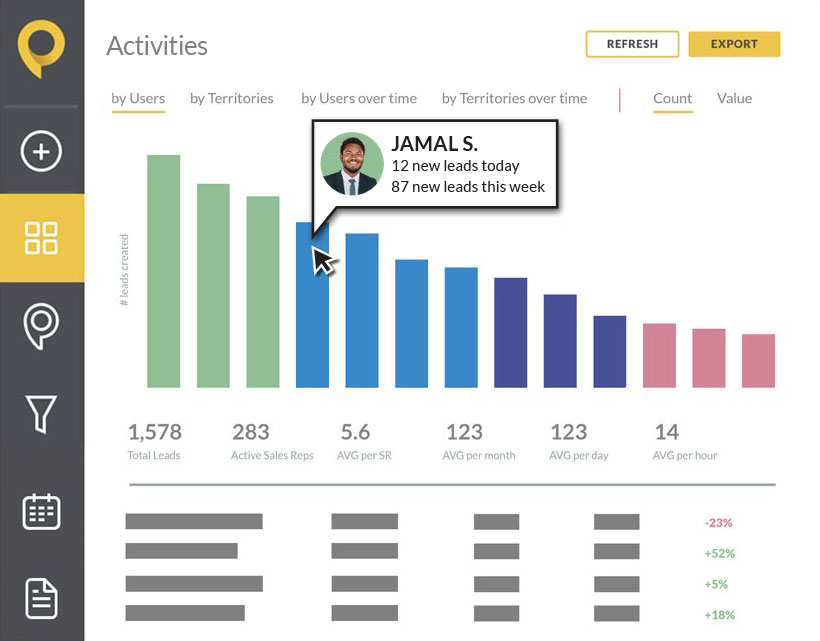
Actionable tip:
Keep a record of daily activity that includes how many calls you had, people you talked to, demos you performed, and units you sold. Then analyze your results to look for weak points in your process. For example, if you didn’t sell a lot, maybe your demo needs work.
Always Follow Up
Why is this important?
Nearly half of sales reps never make a follow-up attempt, and that can result in lost sales. (See our blog post about why following up is important).
Actionable tip:
Use an appointment app or book to organize and optimize your call back schedule. Also, whenever possible, get prospect email addresses so you can add them to any automatic follow-up software you might be using.
Within SPOTIO’s appointment setting feature you can easily organize and manage the follow-up process. From the field, you can capture lead notes, input a prospect’s contact details, and view, set, and manage appointments. All this information will automatically sync to SPOTIO, eliminating the need to re-enter field notes at the end of the day.
FAQ
What are the pros of door to door sales?
Door to door sales can help businesses build relationships with prospects, which is especially important when selling high-value items.
What are the cons of door to door sales?
It’s possible that reps could inadvertently cold-knock prospects who have already interacted with another sales rep, but sales territory mapping and prospecting software can prevent this misstep.
What’s the average conversion rate in D2D sales?
The average conversion rate for field sales is 2-3%; however, that figure may vary based on factors like the cost of the purchase, competition, and market trends.
Ready. Set. Sell.
Door to door sales isn’t for everybody or for every type of business. But if you have the right combination of opportunity, talent, and technology, you can take your business development efforts to a new level.
____________
SPOTIO is the #1 field sales engagement and performance management software that will increase revenue, maximize profitability, and boost sales productivity.
Want to see a product demonstration? Click here to see how SPOTIO can take your sales game to the next level.



